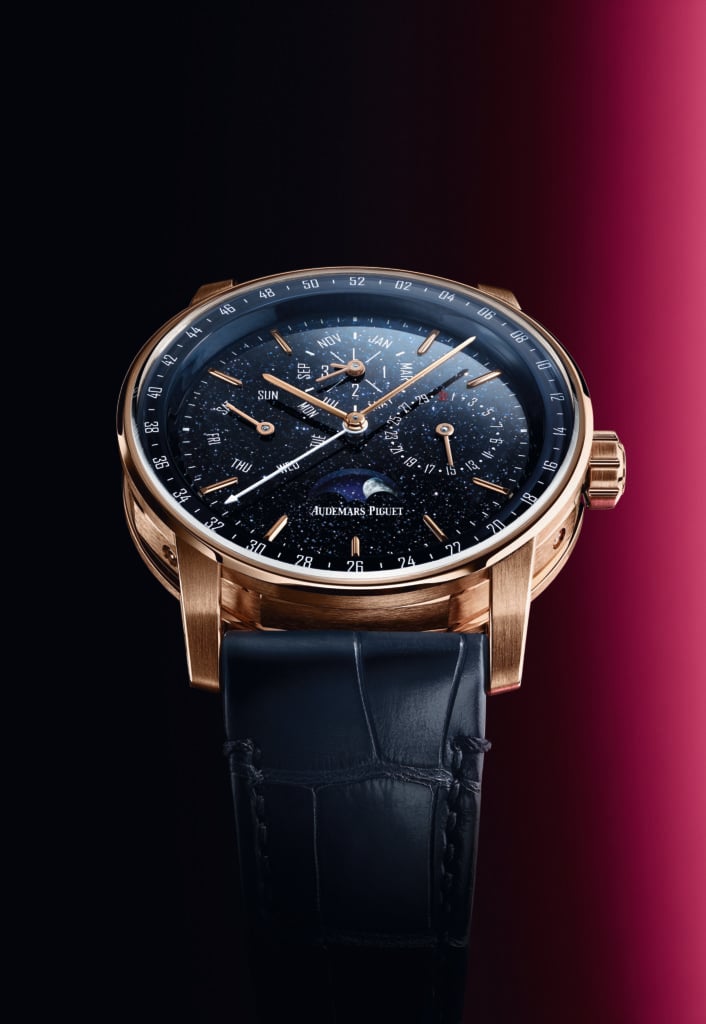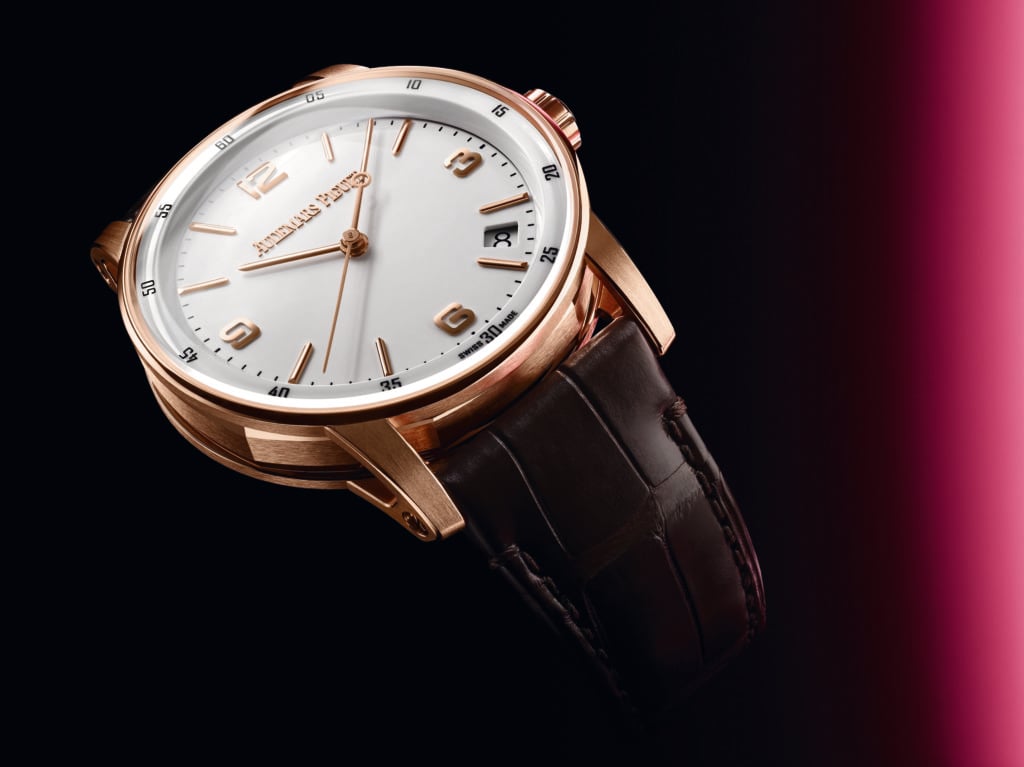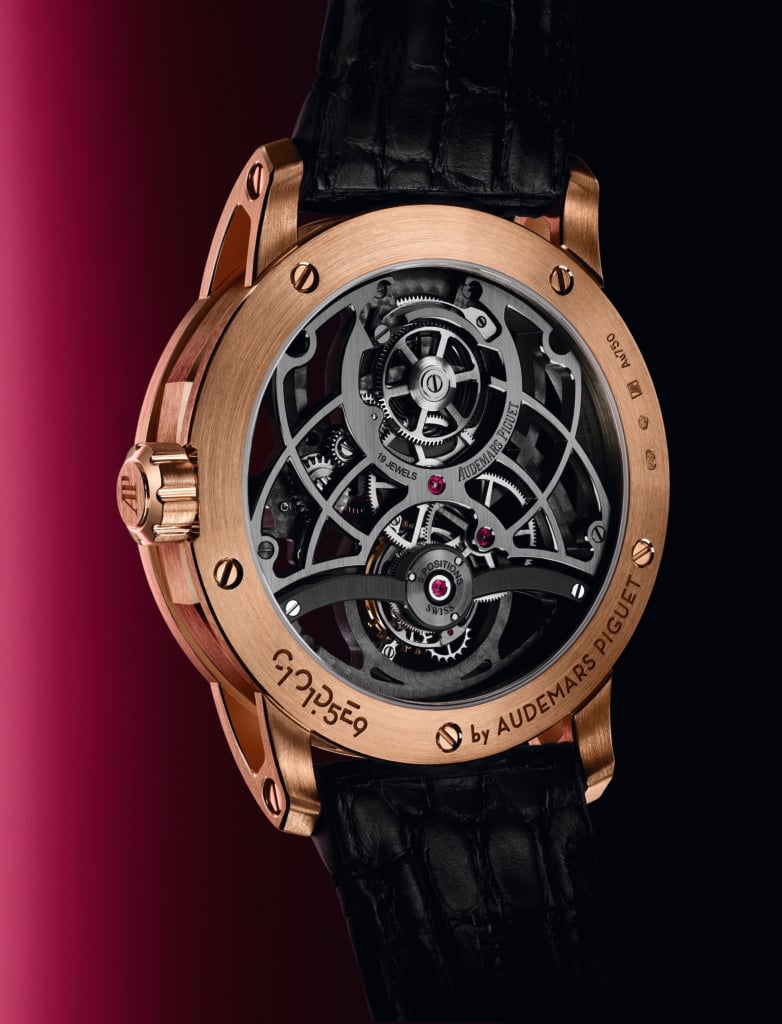Art World
Audemars Piguet Revives Its Heritage With a New Collection of Classic Watches
The luxury brand is returning to its roots with its latest line.

The luxury brand is returning to its roots with its latest line.

Nazanin Lankarani

“If we are writing a new page in the history of the company, it has to be perfect.”
With those words, Audemars Piguet’s chief executive, François-Henry Bennahmias, introduced Code 11.59, the Swiss watchmaker’s new collection at a much anticipated unveiling last week in Geneva, just as the 29th edition of the Salon International de Haute Horlogerie (SIHH) got underway. “This is our most important launch since the Royal Oak was designed by Gerald Genta in 1972,” Bennahmias told a group of international journalists, dressed in his usual leather motorcycle jacket and calmly undaunted by the self-imposed challenge.
The Code 11.59 chapter was long-awaited by the watch industry. Although the watchmaker remained tight-lipped ahead of the unveiling, the internet went abuzz after pre-launch photographs of the collection circulated on social media. Much of the anticipation was generated by Audemars Piguet’s announcement that the new collection was a “return to classicism.”
In watch-industry jargon, classicism typically signals a round watch case, the shape most frequently found in men’s watches. Appropriately, Code 11.59 is designed with a distinctive round case embedded in an octagonal middle case with both polished and matte finishes to emphasize its angles. The octagon in the middle is a subtle sign of its affiliation with the Royal Oak. The open-worked lugs are welded to an extra-thin bezel and a complex, dome-shaped, double curved, glare-proof sapphire crystal enhances the watch’s contemporary design.
What the collection exudes in force and restrained intensity is due to the fact that it brings together all of the know-how for which Audemars Piguet is renowned. The result of at least seven years of research and development, it comes in 13 models, three new calibers, and five complications that include an integrated chronograph with flyback function, a perpetual calendar, and a “supersonnerie” chiming complication.

Code 11.59 by Audemars Piguet. Self-winding. Photo: Courtesy: Audemars Piguet.
The name Code 11.59 was chosen to suggest that Audemars Piguet stands at the dawn of a new day, a minute before midnight, in a world where every second counts. “The idea was to launch a contemporary classic model that would be both imposing and not easily copied,” Bennahmias said. “It is harder to create a well-designed everyday watch than it is to do a sport watch. Everyone else is doing sports watches today.”
Code 11.59 is the watchmaker’s first foray into classic territory in four decades, and “classicism” is a term hardly associated with the brand. Since the Royal Oak was born, the brand has mainly occupied rugged sports watch territory. The original Royal Oak—with its steel case, octagonal bezel, “tapisserie” dial and integrated bracelet—had disrupted existing codes of watchmaking and quickly become a modern ideal. It is still one of the most distinctively masculine sports watches ever designed, recognisable by its signature shape and imposing allure.
Yet in the years predating the Royal Oak, Audemars Piguet (which was founded in 1875), was known for its classic round watches and for experimenting with shapes and designs. Code 11.59 is, in that sense, a evolutionary step in an ongoing process. And to refresh everyone’s memory, the watchmaker displayed in its booth at SIHH a few historic models dating back nearly a century, including a 1936 oversized round chronograph; a 1945 round minute repeater; a 1959 round Disco Volante extra-thin; and a 1961 multi-geometric model, with a round dial encased in a rectangle.

Code 11.59 by Audemars Piguet. Openworked caseback. Photo: Courtesy: Audemars Piguet.
Bennahmias, who has been at the helm of the company since 2012, said that classic watches were a terrain that Audemars Piguet was looking to reconquer. That is one of many projects in the works for a brand that produces some 40,000 timepieces annually, and generates a cool billion dollars in sales, according to Bennahmias. Among those other ambitions is a new museum and archive dedicated to historic timepieces, now under construction in Le Brassus. Meanwhile, production facilities are being augmented, indicating optimism as the company looks to the future.
Bennahmias’s strategy is to focus on producing bespoke events in line with Audemars Piguet’s strategic partnerships, ones that are tailored to the needs of a younger clientele. Those partnerships are principally with Art Basel in Miami and an upcoming partnership with the Montreux Jazz Festival this summer in Switzerland.
“The idea is to be more agile as a brand, to be present where the clients are, and to have the latest models available,” Bennahmias said. “The young generations want to buy their watches immediately. For a model to be available six months after launch, it is too late.”
He is betting on the success of Code 11.59, projecting that the new collection will, in time, make up 20 percent of sales by appealing to die-hard Audemars Piguet fans wedded to the Royal Oak, and to a new clientele in the market for an everyday, classic yet contemporary watch with a recognizable look.
The models in the Code 11.59 collection are priced from $26,800 for the automatic with white dial to about $295,000 for the minute repeater, and will be available in February in Audemars Piguet boutiques around the world.